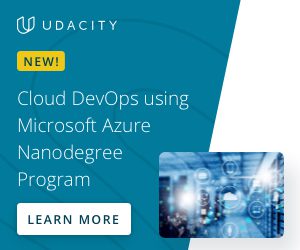The 14 Best Cloud Security Courses on Pluralsight for 2023

Solutions Review compiled the top cloud security courses on Pluralsight for cloud and cybersecurity engineers of all skill levels.
Cloud security skills are in high demand among organizations that are looking to operate and maintain their organization’s cloud solutions. The pandemic and subsequent ‘new normal’ of remote work are furthering demands for these skills. Many are turning to online learning platforms to up their game and acquire the cloud security skills most likely to help them stand out. And whether you are looking to acquire those skills for work or for play, this collection of Pluralsight cloud security courses will help you learn the ropes so you can pilot some of the most widely used tools in no time!
With this in mind, the editors at Solutions Review have compiled this list of top-rated Pluralsight cloud computing courses to consider taking. This platform is perfect for those looking to take multiple courses or acquire skills in multiple different areas, or for those who want the most in-depth experience possible through access to entire course libraries or learning paths. In sum, Pluralsight offers more than 7,000 expert-led video courses.
Note: Our editors assembled this directory by listing top-rated Pluralsight cloud computing courses in a number of different cloud security coverage areas, including Amazon Web Services, Microsoft Azure, Google Cloud Platform, cloud migration and transformation, and cloud management. We included courses that had a 4.5-star rating or higher and at least 25 student reviews.
Click GO TO TRAINING to learn more and register.
The Best Cloud Security Courses on Pluralsight
AWS Developer: Deployment and Security
“AWS gives developers a lot of options, but it can be overwhelming to know the best way to deploy applications or how to secure your resources. In this course, AWS Developer: Deployment and Security, you will gain the ability to effectively deploy applications to AWS and secure your AWS infrastructure. First, you will learn how to efficiently deploy resources and applications. Then, you will explore how to secure your resources in a VPC. Finally, you will discover how to use Users, Groups, and Roles to give permissions to your resources. When you’re finished with this course, you will have the skills and knowledge of AWS deployment and security needed to ensure your AWS resources are secure and maintainable.”
GO TO TRAINING
AWS Networking Deep Dive: Virtual Private Cloud (VPC)
“Is your existing VPC configuration holding you back? In this course, AWS Networking Deep Dive: Virtual Private Cloud (VPC), you’ll learn the inner-workings of VPC components and how they differ from their traditional network analogs. First, you’ll discover how to create multi-VPC topologies and build secure connectivity between them. Next, you’ll explore how to create and use a transit VPC to enable scalable connectivity between multiple VPCs and on-premises networks. Finally, you’ll learn how restrict IPv4 and IPv6 internet access. When you’re finished with this course, you’ll have the skills and knowledge to create secure and scalable VPC designs.”
GO TO TRAINING
Cloud Security: Introduction to Certified Cloud Security Professional (CCSP®)
“Many organizations may make the mistake of skipping architecture and going straight to design. This can be avoided by selecting a cloud service provider that fits with your business requirements. In this course, Cloud Security: Introduction to Certified Cloud Security Professional (CCSP), you will learn foundational knowledge of how to translate business requirements into selection criteria for a cloud service provider. First, you will learn how to identify which cloud architecture best meets your business requirements. Next, you will discover how to use security architecture to develop a secure cloud consumption strategy. Finally, you will explore how to select a cloud service provider and meet regulatory requirements. When you’re finished with this course, you will have the skills and knowledge needed to select and consume cloud services securely.”
GO TO TRAINING
Ethical Hacking: Cloud Computing
“The Cloud is revolutionizing how we run software and services by providing low-cost, flexible, and innovative alternatives to traditional hosting models. However, with the shift to the cloud comes new security considerations. The cloud isn’t more secure or less secure, rather it’s differently secure; it strengthens security profiles in many areas whilst presenting new risks in others. Then again, many of the traditional risks in software don’t change at all. In this course, we’ll look at the ways the cloud can enable us to build more secure software than ever, whilst also identifying where it can leave us more vulnerable. We’ll also look at “hardening” the cloud“ how can we take this new computing paradigm and use it to strengthen our security profiles?”
GO TO TRAINING
Identity and Access Management on AWS: Users
“At the core of Identity and Access Management (IAM) usage in AWS is a thorough knowledge of users and their purpose. In this course, Identity and Access Management on AWS: Users, you’ll learn how to properly create and use IAM users and optionally federate them with external directory services. First, you’ll learn about the root user that is the only user in a new account and why this user should be used to set up the IAM user that will do the rest of the configuration. Next, you’ll explore how to create users for both Management Console and programmatic access, as well as how to secure that access. Finally, you’ll discover how to federate IAM in AWS with external authentication services, such as Active Directory and web identities (including Amazon, Google, and Facebook), as well as other frameworks like OpenID and SAML. When you’re finished with this course, you’ll have a foundational knowledge of users in IAM on AWS that will help you as you move forward with securing your AWS infrastructure.”
GO TO TRAINING
Implementing AWS Networking Security Groups
“It can be frustrating when you can’t access your EC2 instance and don’t know why. In this course, Implementing AWS Networking Security Groups, you will gain the ability to configure security groups and IP addresses to allow the access you need to and from your EC2 instances. First, you will learn about security group rules. Next, you will discover how to configure security groups to meet your needs. Finally, you will explore how to assign internal and external IP addresses to your instances. When you’re finished with this course, you will have the skills and knowledge of security groups and IP configuration needed to troubleshoot and solve access issues with your EC2 instances.”
GO TO TRAINING
Introduction to AWS Cloud Security
“Every day, more applications adopt the AWS cloud causing an exponential demand for cloud security to protect and scale enterprises. In this course, Introduction To AWS Cloud Security, you will gain the ability to create a secure cloud environment within AWS. First, you will see an overview of foundational AWS service offerings and how they relate to the security of your infrastructure. Next, you will discover how to protect your cloud data and enable secure communication between cloud services. Finally, you will explore how to maintain a secure enterprise cloud environment with cutting-edge logging and monitoring solutions. When you are finished with this course, you will have the skills and knowledge of AWS needed to create a secure cloud environment.”
GO TO TRAINING
Introduction to Security and Architecture on AWS
“AWS certifications add value for both technical and non-technical resources in today’s digital world. In this course, Introduction to Security and Architecture on AWS, you will learn foundational knowledge of both security on AWS as well as how to architect solutions on the platform. This information is valuable for anyone using AWS, but it is essential for preparing to take the AWS Certified Cloud Practitioner Exam. First, you will review three core concepts that affect how you use the platform: the AWS Well Architected Framework, the shared responsibility model, and the acceptable use policy. Then, you will learn security and user management on AWS. Next, you will discover key architectural concepts around fault tolerance, high-availability, and disaster recovery. Finally, you will explore concepts around scalable and secure applications on Amazon EC2. When you are finished with this course, you will have a clear understanding of the concepts needed for a portion of the AWS Certified Cloud Practitioner exam as well as the knowledge needed to begin implementing applications in the cloud.”
GO TO TRAINING
Managing AWS Security and Identity
“Follow along and go through the best practices of AWS account security from two different vantage points. In this course, Managing AWS Security and Identity, you’ll learn how to configure Amazon’s Identity and Access Management feature, commonly known as IAM. First, you’ll discover IAM user and group security best practices and IAM policies. Next, you’ll explore when and how to use IAM roles and how to account audit. Finally, you’ll learn about federating multiple AWS accounts and federating AWS IAM accounts with an external identity provider, such as Active Directory. By the end of this course, you’ll be able to properly secure your AWS accounts using policies, two-factor authentication, and even permit other AWS accounts access to the resources in your account.”
GO TO TRAINING
Managing Microsoft Azure Role-Based Access Control
“At the core of Azure Role-Based Access Control is a thorough knowledge of assigning least privilege in Azure. In this course, Managing Microsoft Azure Role-Based Access Control, you will learn how to understand all aspects of Azure RBAC. First, you will discover how to implement RBAC to mediate administrative access to Azure resources at the management group, subscription, resource group, and resource level. Next, you will explore how to audit RBAC activity. Finally, you will learn how to create and validate custom roles as well as how to troubleshoot your RBAC deployment. When you are finished with this course, you will have a foundational knowledge of Azure Role-Based Access Control that will help you as you move forward to secure Azure Resources. Software required: Standards Compliant Browser.”
GO TO TRAINING
Managing Microsoft Azure Security
“Configuring and monitoring the security of your Azure environment is a challenging endeavor. You want to ensure you are following best practices, finding important events, and taking a proactive stance on security configuration. Microsoft Azure Security Center helps provide a single management point for all things security in Azure. In this course, Managing Microsoft Azure Security, you will learn how to properly leverage the Azure Security Center from Microsoft to meet the advanced security needs of a cloud deployment. First, you will explore how to configure policies and data collection for the resources in your Azure subscriptions. Next, you will learn how to review the recommended actions from Security Center and prioritize which actions to take first. Finally, you will understand how to use the advanced cloud defense features to take your security game to the next level. By the end of this course, you will be able to leverage Azure Security Center to improve your security posture in Azure and assess and remediate vulnerabilities effectively.”
GO TO TRAINING
Microsoft 365 Security Concepts
“In this day and age, it’s important for any IT Professional to know what Microsoft offers from a cloud computing perspective. In this course, Microsoft 365 Security Concepts, you will learn about the different security and management tools that are included in Microsoft 365. First, you will learn about Azure Active Directory, the identity and access management backbone of Microsoft 365. Next, you will discover the different mobile device management and mobile application management tools available with Microsoft 365. Finally, you will explore the different tools that you have in Microsoft 365 to stay compliant. When you are finished with this course, you will gain an understanding of the security and management tools included in Microsoft 365 and how Microsoft 365 can help an organization operate more efficiently and securely.”
GO TO TRAINING
Securing Applications in Microsoft Azure
“Public-facing applications are common targets for hackers and malicious users. In this course, Securing Applications in Microsoft Azure, you will gain the ability to prevent these attacks by leveraging Microsoft Azure’s powerful security services. First, you will learn to eliminate sensitive service credentials from your app code by using Managed Identities (MSI). Next, you will discover how Network Security Groups (NSG) and Application Security Groups (ASG) are used to control inbound and outbound traffic for virtual networks and virtual machines. Finally, you will explore how to protect Azure app service deployments from common attacks such as SQL injection and XSS by using Web Application Firewalls (WAF) and App Service Environments (ASE). When you are finished with this course, you will have the skills and knowledge of Azure security services needed to protect your applications in Microsoft Azure.”
GO TO TRAINING
Securing the Docker Platform
“Docker containers are in widespread use as the distribution vehicle for cloud-native application services. An important enabler in the process of building, packaging, and running those containers is the Docker platform, which is comprised of several parts. In this course, Securing the Docker Platform, you’ll learn about the fundamental aspects of security that relate to the platform components. First, you’ll gain a better understanding of the platform components involved and the means of measuring compliance against an industry benchmark standard. Next, you’ll discover how to configure the Docker daemon for best practice security, as well as for more flexible access control and authentication. Finally, you’ll explore how to apply security controls to other aspects of the platform including a self-hosted Docker registry and a Swarm cluster. By the end of this course, you’ll have the necessary knowledge to configure, measure, and optimize effective Docker platform security.”
GO TO TRAINING
Solutions Review participates in affiliate programs. We may make a small commission from products purchased through this resource.
Looking for a managed service provider for your cloud solutions? Our MSP Buyer’s Guide contains profiles on the top managed cloud service providers for AWS, Azure, and Google Cloud, as well as questions you should ask vendors and yourself before buying. We also offer an MSP Vendor Map that outlines those vendors in a Venn diagram to make it easy for you to select potential providers.
Check us out on Twitter for the latest in Enterprise Cloud news and developments!

















